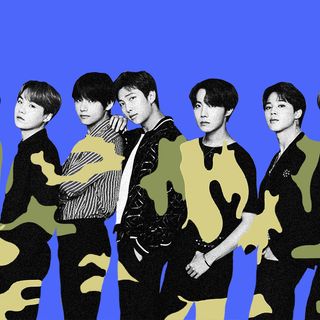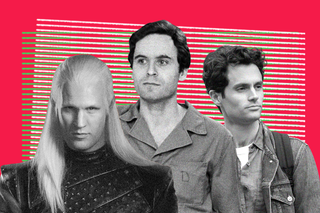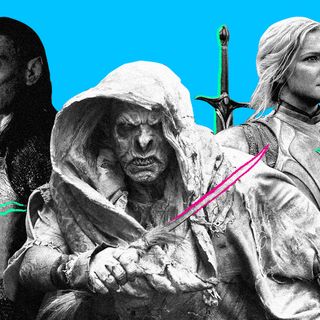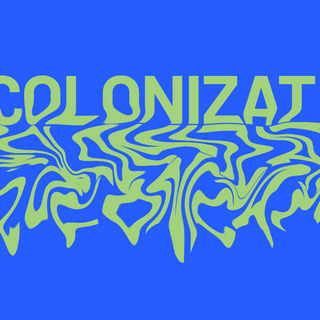
Why Do We Desire Famous Bad People?
Whether in fiction or in real life, murderous people have captivated people in unexpected — and uncomfortable — ways.

“He is desperate and therefore vulnerable, at risk and therefore brave, wholly given over to an idea. His intensity reeks of glamour. Women, we are told, lust to have him. Men, we are told, long to be him. He is sexy because he is deadly; he excites with the thrill of fear. He has been celebrated and evoked for centuries.”
These are the words of radical feminist Robin Morgan in Demon Lover: The Sexuality of Terrorism. And it describes our fixation with men who do terrible things — to our own detriment.
Producers of HBO’s House of the Dragon are reportedly confused: why is the internet thirsting over Daemon Targaryen? “I’m a little baffled how they’re all, ‘Oh, daddy!’ And I’m just like: ‘Really?’ How — in what way — was he a good partner, father or brother — to anybody?” said executive producer Sarah Hess. Many have proclaimed they’re attracted to the dark prince due to a kind of “I can fix him” energy.
All the most famous serial killers — Ted Bundy, Richard Ramirez, Charles Manson, and even the school shooters of Columbine High School in 1999 — have dedicated fandoms to date. During their time in prison, they received hundreds of fan letters from women, with even nude photos and underwear attached in some.
But there’s a uniquely feminist quandary at play when it comes to lusting after killers: why do women desire men who harm other women?
For some, it may be to regain a sense of control; some others, perhaps, are turned on by the idea of a break in the monotony. “In nearly every penitentiary across the country you’ll find female employees, like lawyers, therapists, and guards, getting involved with inmates,” said Louis Schlesinger, professor of forensic psychology at the John Jay College of Criminal Justice.
“For many of these women, interacting with criminals provides a distraction from what they find to be a boring life,” added Jeffrey Ian Ross, a criminologist.
“It’s hard to say where the figure of the ‘bad man’ ends and the ‘antihero’ begins. There’s a huge crossover there and, as a result, bad men are often romanticized — tragically flawed, but human; dark and sinister, but exciting. As long as antiheroes are seen as attractive, bad men will be too, on some level… In real-life terms, though, it’s often less a matter of being attracted to exclusively ‘bad’ men, and more the crumbs of goodness they offer: attention when no one else is giving it,” said Laura Elizabeth Woollett, author of The Love of a Bad Man.
“Violence is just exciting. If I [were] to have a killer as a boyfriend it would make me excited, you know? It’s a bit like Russian roulette — my turn could be soon and he could kill me,” one feminist teenager who is a fan of serial killers, told Vice. “I think women who like serial killers are just attracted to the danger,” said another.
Related on The Swaddle:
What Pop Culture Misunderstands About Serial Killers
According to science, it’s called the “Bonnie and Clyde Syndrome,” which is the colloquial name for ‘hybristophilia.’ It’s when people — and women in particular — are sexually attracted to people who have committed heinous crimes. It comes under a family of attractions called paraphilia, which is characterized by sexual interest in objects, situations, or people that is “atypical” in nature. Of course, this view of sexuality that centers some behavior as normal and others as “abnormal” is problematic at best, and dangerous, at worst.
Some research suggests there’s a difference between being attracted to fictional bad people, and real-life ones. When it comes to fiction, people may find “darker versions of themselves” attractive, according to one study.
Some suggest it may be a matter of how the media has reported these crimes — and the inherent tendency to fixate on white killers as mysterious, gothic, and intriguing for their minds. This image may be more of our own construction than one that actually adheres to the facts.
“They became the poster boys for ‘goth loner, unlucky with the ladies, racist revenge,’ when the evidence shows that was inaccurate,” said Caitlin Doughty, about Columbine shooter fandoms. In reality, Doughty says, the shooters were bullies themselves, and not so much the underdogs they made themselves out to be.
But feminists argue that it’s to do with how murders of women are nearly always reported as inexplicable, and their killers merely social aberrations. Instead, some have coined the term “gynocide” to describe the phenomenon of “prestigeless women” killed en masse, while their killers are associated with infamy and spectacle. “The construction of straight, white, post-war masculinity, Bundy tells us inadvertently, literally becomes: what do men do about women? Something had to be done about the newly liberated, feminist women of the 1970s, the question was: what?” notes Masha Tupistsyn.
We may all, then, be complicit in upholding the glamorization of men on a destructive warpath against women — but not always equally. For some, fantasizing about killers affords a sense of control that women don’t have in real life. But the larger part of the blame may be with the way killers and bad men are constructed by the media — often lionized for their crimes, or gazed upon voyeuristically — tracking with the stories we’ve told ourselves about bad men for a very long time.
“The terrorist… is the ultimate sexual idol of a male-centered cultural tradition that stretches from pre-Biblical times to the present: he is the logical extension of the patriarchal hero/martyr. He is the Demon Lover, and society is (secretly or openly) fascinated by him. He walks with death and is thus inviolate; he is an idealist but a man of action, a fanatic of dedication, and an archetype of self-sacrifice, a mixture of volatility, purity, severe discipline,” Morgan adds.
It’s the ultimate intermingling of sex and violence to make an unequal, hierarchical status quo not just palatable — but desirable.
Rohitha Naraharisetty is a Senior Associate Editor at The Swaddle. She writes about the intersection of gender, caste, social movements, and pop culture. She can be found on Instagram at @rohitha_97 or on Twitter at @romimacaronii.
Related


‘Rings of Power’ Complicates Orcs — And That’s a Good Thing
